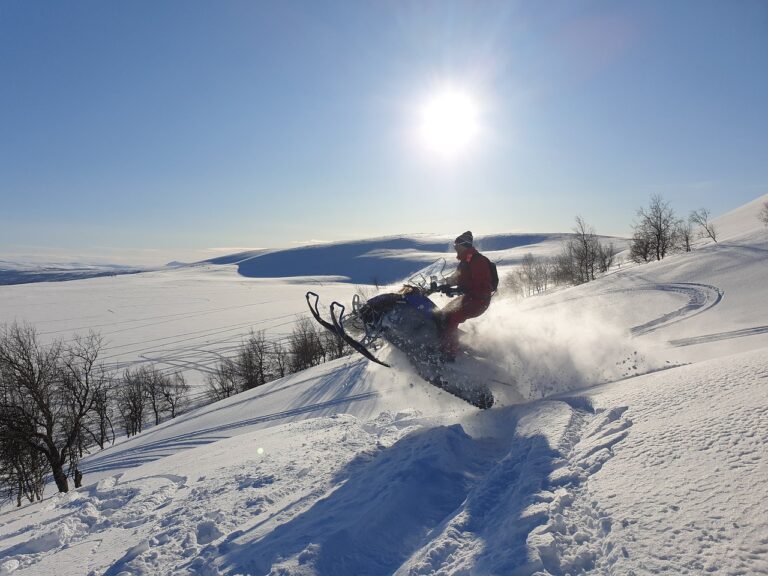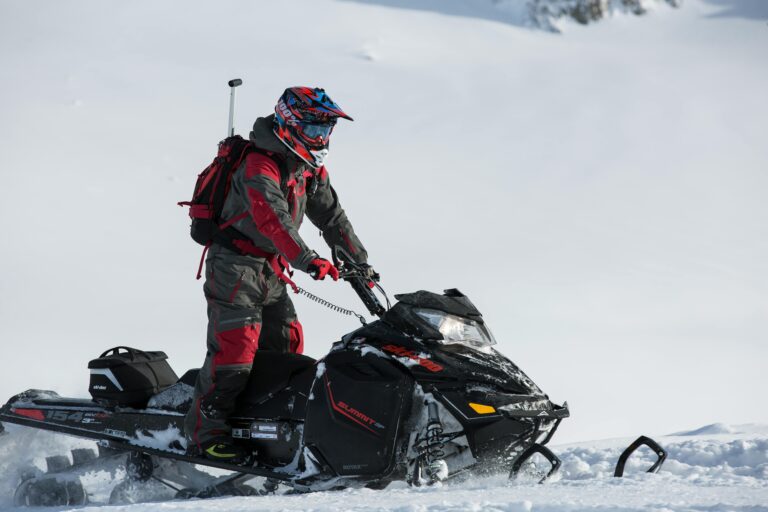In general, standard snowmobiles are not designed for water travel; however, special models and modified versions can float and navigate on water. Innovations in snowmobile design often include features like unique hulls and buoyancy aids, enabling limited water use. Factors like engine performance and surface conditions are crucial for safety and effectiveness.
Ever wondered if you could swap snow for water and still ride your snowmobile? If you’re into adventurous ideas like me, that thought has probably crossed your mind. Surprisingly, some snowmobiles can actually glide over water—provided they’re built or modified just right. But don’t go tossing your regular sled into a lake just yet. Let’s break down what really makes snowmobiling on water possible—and safe.
Not every snowmobile can handle water. Whether your ride can float depends a lot on its design and what the water’s like. Things like engine power, hull shape, and water conditions all play a role. So buckle up (or helmet on) as we explore how to turn your winter machine into a water-ready beast.
How Do Snowmobiles Operate on Water?
Snowmobiles designed for water operation feature specialized hulls to provide buoyancy and propulsion systems adapted to push through water, allowing them to glide across lakes and rivers. These designs often incorporate watercraft features while retaining snowmobility capabilities.

Here’s the scoop: snowmobiles made for water have hulls shaped to keep them afloat, much like a boat’s bottom. Instead of just relying on tracks that dig into snow, they have systems that actually push through water—think propellers or paddle-like mechanisms. It’s like your snowmobile has a little watercraft magic built right in.
On top of that, their skis get tweaks to help keep things steady when you turn or hit choppier spots on the water. So rather than bouncing around like a flailing fish, you can glide smoothly, almost like skating across ice—except it’s water this time.
Which Snowmobile Models Can Go on Water?
Certain brands like Polaris and Ski-Doo offer models capable of traversing both snow and water, often requiring additional modifications for optimal performance. The right modifications enhance speed and control on various water surfaces.
If you’re serious about trying this, some brands’ve engineered snowmobiles that do double duty on snow and water. Polaris and Ski-Doo are top names here. They make models built for this kind of adventure, though often you’ll want to add extra kits or accessories.
Examples of Snowmobiles with Water Adaptation:
| Model | Features | Modification Kits Available |
|---|---|---|
| Polaris Switchback | Adapted hull for buoyancy | Polaris water-crossing kits |
| Ski-Doo Rave | Water-resistant components, unique ski design | Available aftermarket conversions |
| Arctic Cat Bearcat | Heavy-duty build suitable for various conditions | Specialized flotation accessories |
Owners who’ve taken these machines onto lakes often rave about how different—and fun—it feels. They glide better, handle water more naturally, and don’t leave you stranded mid-lake like a standard sled might.
What Safety Considerations Should You Keep in Mind?
Safety is paramount when using snowmobiles on water. Basic gear includes life jackets, helmets, and communication devices. Riders must remain alert to changing weather conditions and act responsibly to protect themselves and the environment.
Before taking your snowmobile on water, gear up right. Here’s the bare minimum you need:
- Life jackets and helmets. No excuses. Treat these like your lifeline.
- Waterproof radios or phones. If you find yourself in trouble, being able to call for help is a game-changer.
- Check the weather and water conditions. Cold water, sudden storms, or thin ice can turn your fun ride into a rescue mission.
- Respect “no-wake” zones and nature. You’re sharing the water with wildlife and other people—play nice.
Being smart about these basics can save you more than just a soggy outfit.
What Are the Risks of Snowmobiling on Water?
Engaging in water snowmobiling can be risky—overestimating conditions may lead to capsizing or injury. Additionally, users should familiarize themselves with local regulations to avoid penalties and contribute positively to preserving aquatic ecosystems.
Snowmobiling on water isn’t without its dangers. For one, if your machine’s not set up for water or the surface turns rough, you risk capsizing—and nobody’s eager for an unexpected swim.
You also need to think about the environment. Riding recklessly can disturb fish, birds, and the plants that keep waterways healthy. Plus, there are rules to follow. Some places don’t allow snowmobiles on water at all. So before you roar off, make sure you know the laws—and respect the wildlife.
How to Modify a Snowmobile for Water Travel?
Modifying a snowmobile for water use often involves adding flotation devices and specialized tracks for better glide and control. Riders should carefully evaluate the costs and technical aspects before embarking on modifications to ensure they can safely enjoy water travel.
If you’re serious about making your snowmobile water-friendly, here’s what to do:
- Find modification kits designed for your model. These usually include flotation aids and track tweaks.
- Add flotation devices—like pontoons or inflatable bags—to keep you buoyant.
- Swap or adjust your skis to improve stability on water.
- If this sounds tricky, don’t hesitate to get a pro involved. It’s better to be safe and sound than sorry and soggy.
Estimated Costs:
| Modification | Estimated Cost |
|---|---|
| Flotation Devices | $100 – $500 |
| Ski Modifications | $150 – $600 |
| Installation by Professionals | $200 – $1,000 |
Think of these expenses as an investment in safety and fun—going green and wet has its price tag.
Are There Environmental Impacts of Snowmobiling on Water?
Riding snowmobiles across bodies of water can disrupt aquatic ecosystems. It’s crucial to practice responsible riding and be aware of laws and best practices to minimize environmental damage. Operators should opt for designated areas to minimize disturbances to wildlife.
A quick heads-up: your snowmobile’s roar and wake can shake up life in the water. Fish might scatter, birds can get spooked, and fragile plants could get damaged.
Leaks of oil or fuel are another concern, so keeping your rig in good shape matters.
The best way to protect our waterways? Stick to marked trails and avoid shallow, sensitive areas. The environment will thank you—and you’ll enjoy a cleaner, calmer ride.
FAQ Section
Can any snowmobile be used on water?
No, most snowmobiles are not adept at navigating water. Only specially designed or modified snowmobiles can effectively operate on water surfaces, incorporating buoyancy-enhancing features.
Is it safe to snowmobile on a lake?
Yes, it can be safe, but it largely depends on ice thickness, weather conditions, and the snowmobile’s design. Always check local regulations and conditions before venturing out.
How do you keep a snowmobile from sinking in water?
Using snowmobiles with proper buoyancy mechanisms, and avoiding deep waters can help prevent sinking. Modifications can enhance a snowmobile’s ability to perform effectively on water.
What gear do I need for snowmobiling on water?
Essential gear includes a life jacket, helmet, and a waterproof communication device. Safety equipment is critical for handling unexpected situations while snowmobiling on water.
Reader Intent
If you’re like me, you’re always on the lookout for new ways to make outdoor fun even better. Snowmobiling over water? It might sound wild, but it’s happening—and this guide gives you the lowdown on how to do it safely and responsibly.
Keep safety front and center, respect nature, and enjoy that thrill of riding across icy lakes and rivers in a whole new way. Curious for more? Check out our articles on snowmobile weight and snowmobile dimensions for extra tips.
YouTube Videos for Visual Insights
Here’s an insightful video discussion surrounding snowmobiles on water:
Understanding what your snowmobile can—and can’t—handle leads to epic rides that are as safe as they are fun. Whether snow or water’s your playground, get ready for an adventure you won’t forget.






